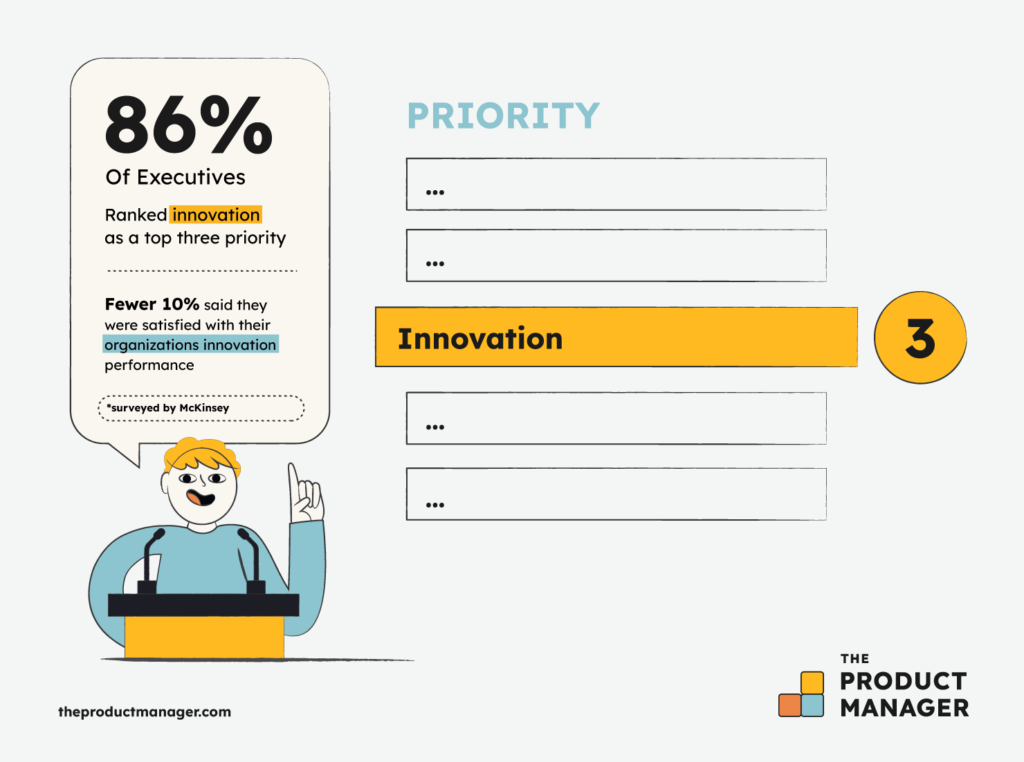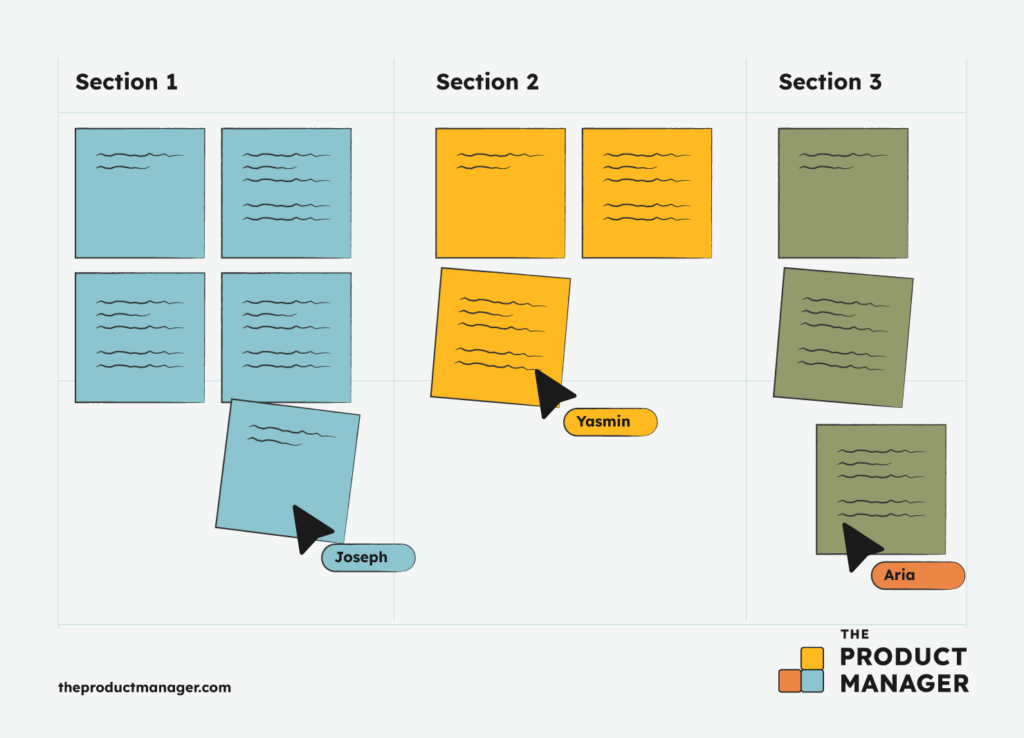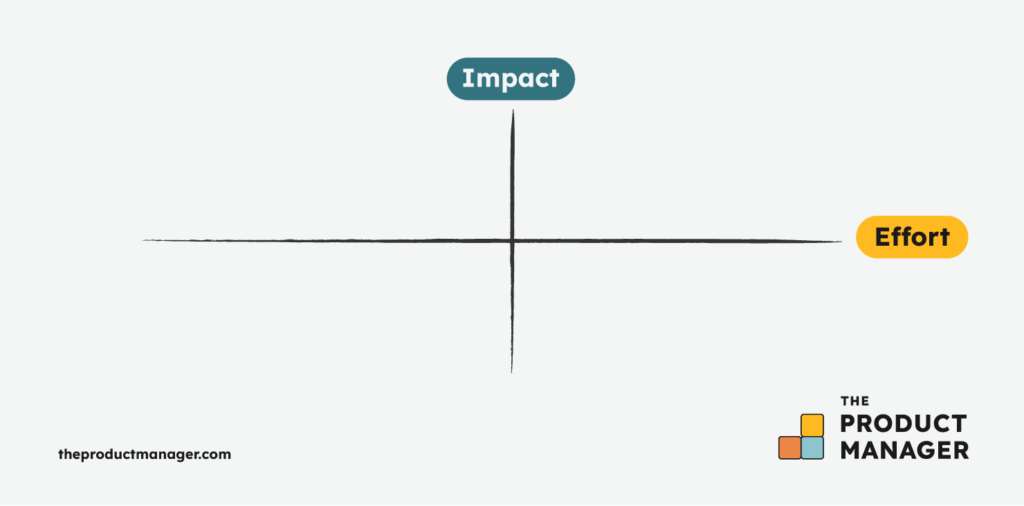Evaluating ideas can be one of the trickiest elements of idea management. The process can become quite subjective—and even contentious—with multiple stakeholders and team members having different priorities.
There are a few tips and techniques to make this flow so much easier. Follow these, and you’ll definitely be selecting the best ideas to drive your product forward.
Where Do Innovative Ideas Come From?
Innovation keeps companies ahead of the competition, helping them find new ways to solve customer problems and generate new revenue streams. Coming up with innovative ideas is an integral aspect of a successful business. A lot of entrepreneurs generate business ideas either through:
- Solving a problem that they know exists. One of the most famous examples being how Airbnb started as a way for the founders to create additional income to pay their own rent.
- Capitalizing on new technology. For example, Whatsapp found its niche and took off when it could utilize the creation of the App Store and push notifications.

But even with a lot of ideas to work with, innovation management isn’t always easy. While 86% of executives surveyed by McKinsey ranked innovation as a top three priority, fewer than 10% said they were satisfied with their organizations’ innovation performance.
So how do you differentiate the excellent ideas from the just-okay ones?
How to Evaluate Innovative Ideas: 3 Key Tips
Often, generating ideas isn’t the hardest part of the innovation process. The problem lies in deciding which ones to progress, and which ones to leave behind. Sometimes ideas seem crazy—until they work. Other times a seemingly promising idea ends up failing to launch. So how do you know which product ideas are worth trying, and which ideas should be left on the shelf?
Follow these step-by-step tips to improve how you evaluate innovation ideas and pinpoint which ones to move forward with.
1. Start With a Clear Objective
A crucial element of your idea management process is to start with a clear objective. This objective will help create a focus for idea generation and also help you to evaluate which type of ideas will most likely move the needle for your product.
Your objective should be narrow enough to generate ideas, but broad enough to encourage creative thinking. The set of criteria should be aligned to the company and product outcomes that you want to drive.
Examples of Clear Objectives
- Increase conversion for last-minute shoppers by 6%
- Increase loyalty for premium business customers by 8%
- Reduce wait time in application by 5%
These all tell you the outcome you want to drive, who for, and by what amount.
2. Define Success
It’s important to be clear on what constitutes a good idea before you launch into brainstorming and idea generation. This will mean that the quality is higher, and the ideas will be easier to evaluate. It gives you and your team clear guidance so you can make sure that the ideas you come up with are high quality.
Successful Ideas Should:
- Contribute to your defined objective
- Be based on some data or insight: every good idea starts with knowing a pain point or customer need
- Be able to have a large impact by reaching the right people, and changing something that is important
Aligning on what makes ideas good allows your team to generate ideas that hit the mark.
3. Sort and Group Ideas

Once you have a large number of ideas, either through ideation workshops or an evergreen strategy, there are always common themes. Before you start evaluating and prioritizing your ideas, it’s best to group the common themes and similar ideas together. These clusters could be based on:
- Particular problems that you’re trying to solve
- Ideas that use similar technology
- Similar approaches to problem-solving
By grouping your ideas, you might create stronger solutions. You might also turn the concept into a broader idea that can be refined and solved in more detail when you start testing and validating your ideas.
Grouping your ideas also reduces the number of ideas you need to evaluate, and helps you to prioritize the broader themes. This also creates space for creativity and flexibility once your team sets out to implement the winning idea.
Using an Idea Evaluation Matrix
Idea evaluation templates support your decision-making by having a clear, visual way to compare ideas. These can be beneficial if you’re prioritizing independently or if you’re prioritizing as a group, as they help create structure and focus in the idea evaluation process.
Using an idea management tool can also help with the evaluation and decision-making process, and can facilitate more objective processes for your team.
Here are a few evaluation techniques you can try:
Riskiest Assumption Prioritization
If you’re working on a newer, riskier topic where you don’t have as much insight, you can rank your ideas based on your riskiest assumptions.
In this case, you want to find the insights that tackle your riskiest assumptions first, to make sure you’re on the right path. This can be extremely useful when working in startups, scale-ups, and new product development.
To do this, you want to rank your ideas based on:
- How much supporting evidence you have that this idea will succeed (data, customer research, market-size, competitors are doing this)
- How much a concept or idea will influence your overall approach
By the end of this prioritization you’ll have uncovered your biggest, riskiest bets. These are the ideas that if they work, could create massive impact. But if they fail, could completely derail your new product or startup idea.
This approach allows you to check the viability of initiatives early, giving validation to your ideas and making you far more likely to reach product-market fit sooner.
RICE Prioritization
RICE stands for reach, impact, confidence, and effort. This is a great feature prioritization framework to use with a more established product that you’re optimizing. Here’s how to break down the evaluation criteria:
- Reach: How many customers will be affected?
- Impact: How much do you expect this change to impact your desired metrics?
- Confidence: How much evidence do you have that this will work?
- Effort: How difficult will the change be to make?
You then score each idea against these factors to generate an overall numerical value, which will be the ranking of your product ideas. This is a helpful way to measure an idea’s feasibility and potential impact.
This framework biases you towards selecting the most impactful changes, for the least effort. This can be extremely helpful for optimizations. You can also use this approach to collaborate on the most important elements of a design.
Note: To use this effectively, you need to be clear on what a strong impact looks like. This can be linked back to your original objective, and prioritizing the ideas worth pursuing.
Impact vs. Effort Matrix

You can also simplify the RICE approach and just rank ideas based on impact vs. effort, also known as the value vs. effort matrix. Impact combines the idea of reach and the opportunity to hit your goal. If you’re pretty confident on all ideas or you’re making less risky changes, you can skip the confidence measures.
This is a really easy way to trade-off creative ideas with a group, by asking if one idea will add more impact than another. The same question applies to effort. You can use this method when ranking ideas, or giving design feedback on the priorities of a prototype for example.
Once you’ve ranked all of your ideas, you want to work on those that are high-impact, low-effort. You might prioritize other creative ideas that could be more effort, but will lead to greater results over time.
Pinpoint the Best Ideas and Move Forward With Confidence
There are several different techniques that you can use to prioritize ideas. For each technique you could use, you should be clear on how much certainty you already have in the ideas that will lead to success. You can tweak each prioritization framework based on your exact goals and factors that are important to you.
If you make these steps crystal clear, you’ll select the best ideas for your product, and bring stakeholders on your ideation journey with ease!
Join for More Idea Management Insights
Don't forget to subscribe to our newsletter for more product management resources and guides, plus the latest podcasts, interviews, and other insights from industry leaders and experts.


